Madrid’s palatial estates are as layered as the city itself — part royal showcase, part aristocratic ego, and fully steeped in architectural ambition. The styles range from Baroque extravagance to the clean lines of Italian Renaissance, with detours into eclecticism and Rococo. Take the Palacio de Liria, a neoclassical masterpiece designed for the Dukes of Alba. Beyond its stately exterior lies a treasure trove of European art, each piece connected to tales of conquest and connoisseurship. Then there’s Palacio de Buenavista, with its military purpose wrapped in Baroque elegance. Palacio de Longoria stands out for its swirling Art Nouveau design, a playful curveball in a city that often favors symmetry and order. Whether adorned with wrought iron balconies or monumental courtyards, each mansion is a layer in Madrid’s architectural tapestry.
15. Palacio de Amboage
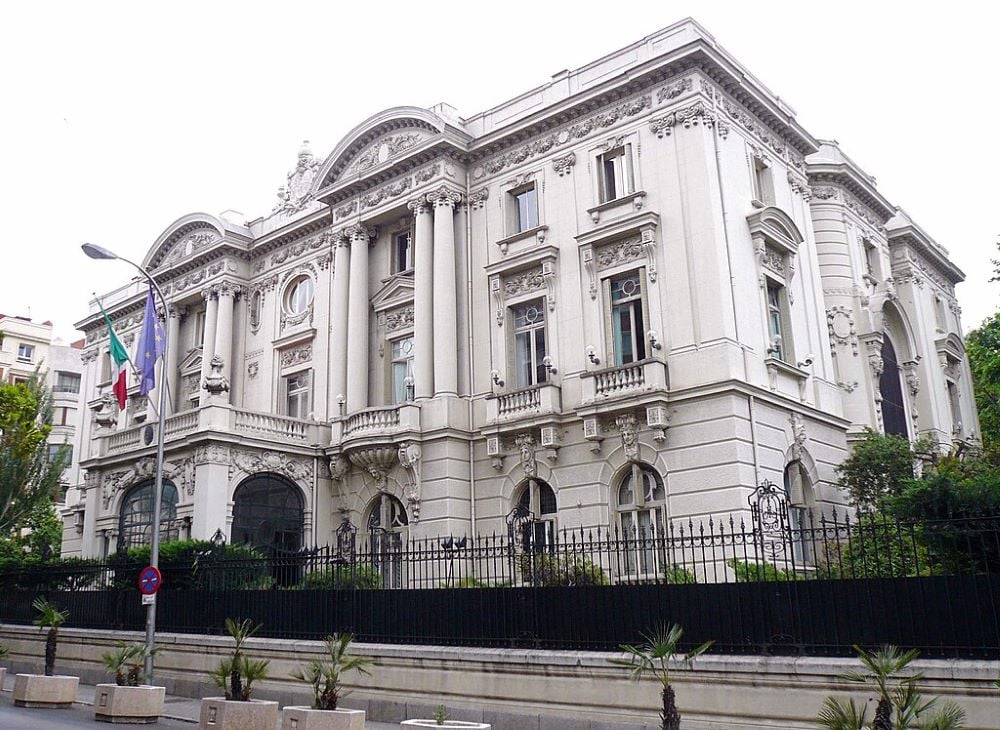
Palacio de Amboage, in Madrid’s upscale Chamberí district, is the kind of mansion that turns heads without trying too hard. Built in 1914 by Joaquín Rojí López-Calvo for the Marqués de Amboage, this neo-Baroque beauty balances aristocratic flair with a splash of early 20th-century pragmatism. The symmetrical façade, adorned with ornamental pilasters and a central pediment, anchors the structure in classical tradition. The detailing is all about balance: intricate carvings that don’t overwhelm, grand entrances that invite rather than intimidate. Inside, the story continues with opulent yet restrained interiors — plaster moldings, polished marble, and parquet floors that practically glow under the natural light flooding in from large windows. Historically, the Palacio de Amboage has worn many hats. Initially a private residence, it later served as a cultural hub and diplomatic post. Now home to the Italian Embassy, the building exudes a quiet gravitas — grand yet approachable, rooted in history but still very much alive in modern Madrid.
14. Palacio de Linares

The Palacio de Linares, is a cornerstone of Madrid’s architectural and cultural lore. Anchoring the Plaza de Cibeles with its ornate Neo-Baroque splendor, this 19th-century marvel was commissioned by the wealthy Raimundo de Osorio, Marqués de Linares, and designed by architect Carlos Colubí in collaboration with Adolf Ombrecht and Manuel Aníbal Álvarez. Completed in 1900, the façade brims with intricate carvings, garlands, and pilasters, all balanced by an imposing central entrance flanked by stately columns. The interior features marble staircases, gilded ceilings, and frescoes by Francisco Pradilla. The ballroom, lit by crystal chandeliers, is a triumph of European elegance, and the library, lined with dark woods and leather-bound volumes, feels like a time capsule. Now home to Casa de América, a cultural institution promoting ties between Spain and Latin America, the Palace of Linares continues to thrive, blending its storied past with a lively present.
13. Palacio de la Duquesa de Sueca
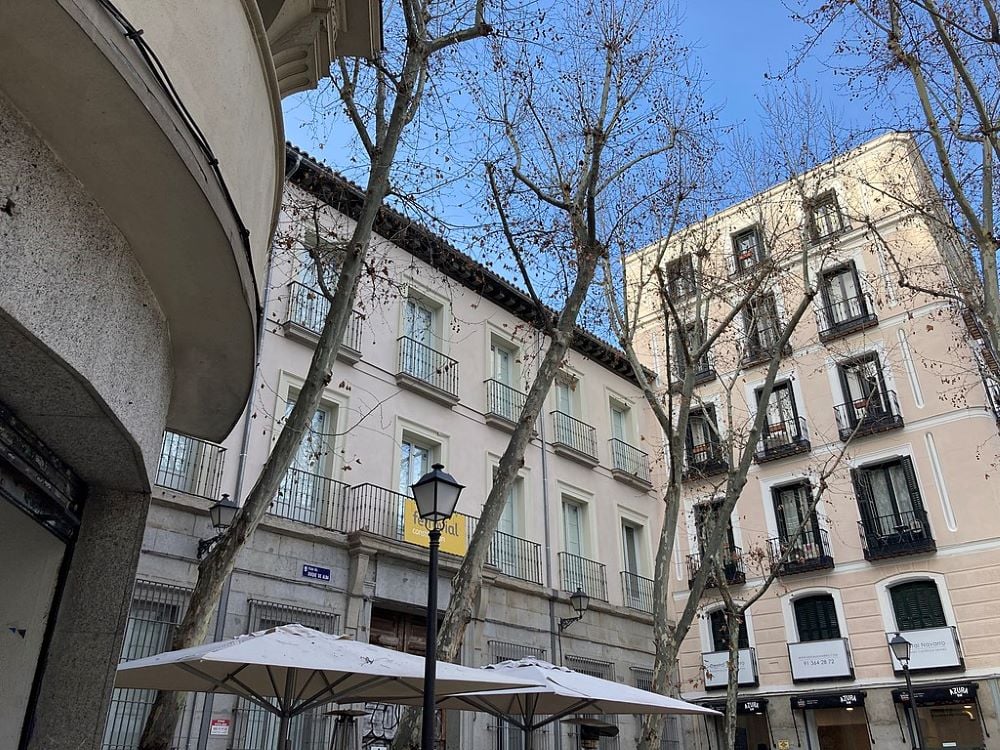
The Palacio de la Duquesa de Sueca, or Palace of the Duchess of Sueca, is an unassuming yet architecturally significant gem tucked into Madrid’s Barrio de las Letras. Built in the late 18th century, this Neoclassical structure was commissioned by Manuel Godoy, the infamous Prime Minister under King Charles IV, for his mistress, María Teresa de Borbón y Vallabriga. The name it carries, however, comes from a later occupant, María Teresa de Borbón, Duchess of Sueca. Designed by the architect Antonio López Aguado, the palace embraces the clean lines and restrained elegance typical of Neoclassicism. Its symmetrical façade is punctuated by a central pediment and framed by simple yet dignified pilasters. The muted stucco exterior contrasts sharply with the ornate interiors that once hosted aristocratic salons and grand soirées. Recent restoration efforts have revitalized the building, ensuring its survival as a historical landmark.
12. Casa de las Siete Chimeneas
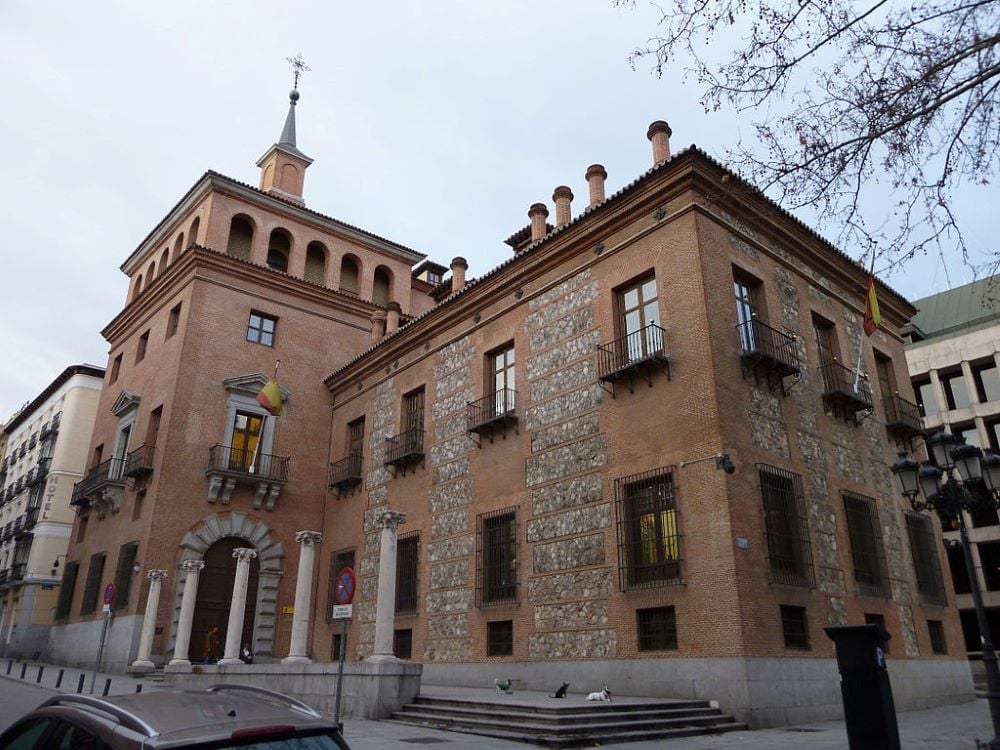
The Casa de las Siete Chimeneas, or House of the Seven Chimneys, is as enigmatic as its name suggests, with its storied past etched into Madrid’s architectural and cultural fabric. Built in the 16th century in the Baroque-Herreresque style, this three-story mansion, now a cultural property, was commissioned by Captain Zapata for his bride, Elena, under the design of Antonio Sillero. The structure’s defining feature, as one might guess, is its seven chimneys rising like sentinels above its tile roof. The simple brick façade is a study in restraint, with wrought-iron balconies and sober window frames that nod to the austere elegance of Spanish design. The courtyard, adorned with arcades and stone columns, adds a touch of classic Castilian charm. Culturally, the house has worn many hats: aristocratic residence, military headquarters, and now the Ministry of Culture’s base of operations.
11. Palacio de Buenavista
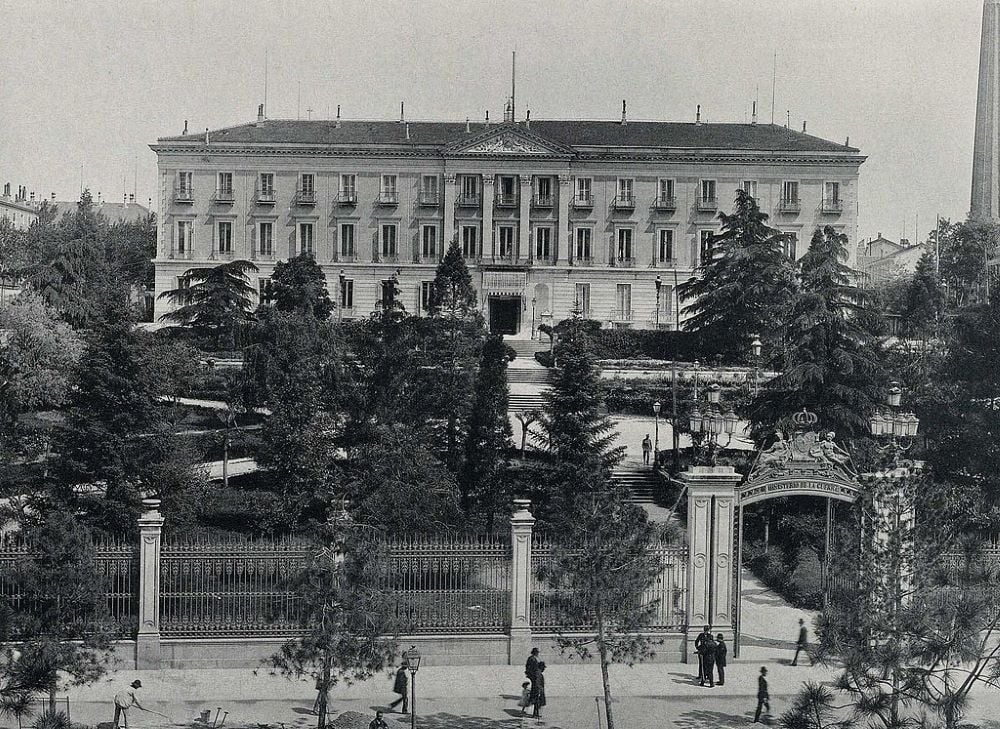
The Palacio de Buenavista, nestled in Madrid’s Salamanca district, is a stately 18th-century masterpiece with roots that trace back to Spanish aristocracy. Commissioned by the Duke of Alba in 1769, it is a prime example of Neoclassical restraint, blending elegance with a military edge. Designed by the architect Juan Pedro Arnal, the palace reflects a transition from Baroque opulence to the clean, balanced lines of Neoclassicism. The palace’s exterior, a blend of granite and limestone, is punctuated by symmetrical windows and an understated cornice. Its façade embraces simplicity, but the expansive gardens — a hallmark of the Buenavista estate — bring the drama. These lush grounds once showcased formal landscaping in the French tradition, echoing the grandeur of nearby palatial estates like the Retiro. While originally a noble residence, it became the General Headquarters of the Spanish Army in 1816, solidifying its place in the nation’s military history. Its grand halls, once designed for aristocratic gatherings, transitioned into strategic war rooms, giving the palace an enduring duality of elegance and utility.
10. Palacio de Liria

The Palacio de Liria, a neoclassical treasure tucked into Madrid’s Chamberí district, has long been the crown jewel of the Alba family. Completed in 1779, its design is attributed to the French architect Louis Guilbert and later refined by Ventura Rodríguez, Spain’s own master of classical proportion. Its symmetry and restraint mirror the Enlightenment ideals of the time, offering an architectural counterpoint to the more flamboyant Baroque styles that preceded it. The façade is a dignified affair of stone and brick, unadorned but commanding, with arched windows and a central pediment. Inside, however, the Liria explodes with cultural significance. The Alba family’s art collection, one of Europe’s finest, features works by titans like Goya, Rubens, and Titian, alongside a library that houses manuscripts dating back centuries. The building’s history is as dramatic as its interiors. Heavily bombed during the Spanish Civil War, the palace was meticulously rebuilt in the 1950s. The result is a seamless blend of historic grandeur and modern restoration.
9. Palacio de Zurbano
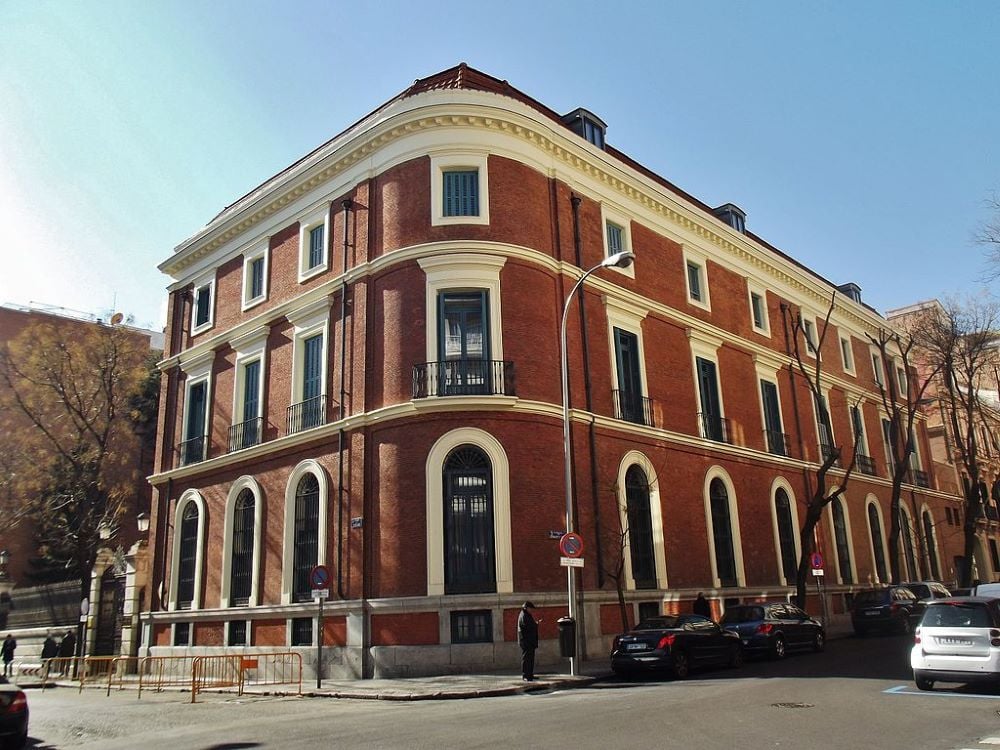
The Palacio de Zurbano, a gem of 19th-century Madrid, epitomizes the elegance of the Spanish bourgeoisie during the reign of Queen Isabella II. Built in the 1870s for the Marqués de Zurbano, it stands as a testament to the eclectic tastes of its era, blending neoclassical symmetry with richly ornamented interiors. The façade, restrained yet commanding, features a rhythmic arrangement of arched windows and a stately portico with Ionic columns. The palace’s brick and stone exterior plays with texture and light. The interiorsfeature frescoed ceilings, gilded moldings, and intricate parquet floors. Its grand ballroom, with crystal chandeliers and mirrored panels, reflects the ambitions of its original owners to entertain on a princely scale. The Palacio de Zurbano has seen its fair share of transformations, including its later use as a diplomatic residence and official government space. The palace’s setting on Zurbano Street, often referred to as one of Madrid’s most elegant thoroughfares, cements its status as a hallmark of urban sophistication.
8. Palacio de Longoria
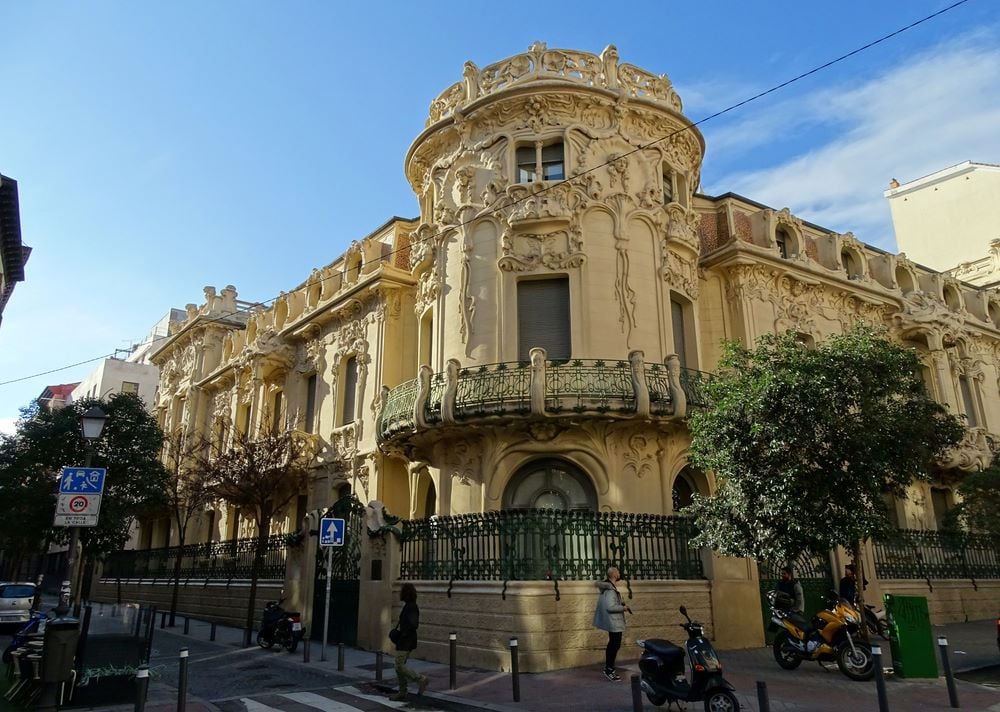
The Palacio de Longoria, located in Madrid’s Chamberí district, is one of the city’s few remaining examples of Art Nouveau architecture. Designed by José Grases Riera in 1902, this building was originally commissioned by financier Javier González Longoria as both a residence and business office. Its striking design breaks from the city’s predominantly classical and Baroque architecture, making it a standout piece of early 20th-century modernism. The structure’s undulating façade features intricate floral motifs, wrought iron balconies, and a distinctive central turret. The Maumejean brothers created stained-glass windows, adding bursts of color and light to the already detailed design. The organic forms and fluid lines are typical of Art Nouveau, inspired by nature and emphasizing elegance over symmetry. Inside, the decor is equally elaborate, with curved staircases, intricate molding, and flowing patterns that blur the lines between functional design and artwork. The building’s unique aesthetic later found a fitting purpose as the headquarters of the Sociedad General de Autores y Editores (SGAE), an organization representing Spanish creatives.
7. Palacio del Marqués de Salamanca
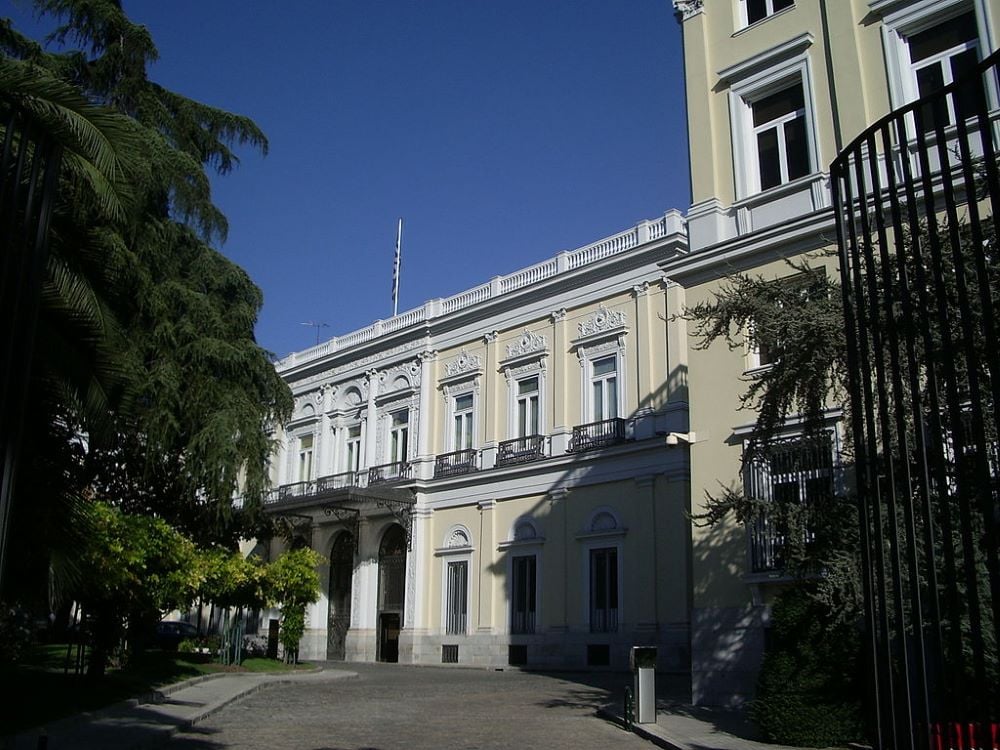
The Palacio del Marqués de Salamanca is a Madrid icon of 19th-century eclecticism, standing on the prestigious Paseo de Recoletos. Built between 1846 and 1855, this stately residence was commissioned by José de Salamanca y Mayol, a financier, politician, and visionary for whom Madrid’s wealthy Salamanca district is named. Architect Narciso Pascual Colomer combined elements of Neoclassicism and Renaissance Revival to create an imposing yet balanced façade. The palace’s ashlar stone exterior is adorned with pilasters, cornices, and symmetrically arranged balconies. Inside, the central courtyard, or patio, becomes the architectural heart of the house, surrounded by salons, grand staircases, and decorated rooms. Frescoes, tapestries, and carved woodwork reflect Salamanca’s taste for refinement and his desire to entertain in style. Following the Marquess’s financial downfall, the palace changed hands multiple times, serving various institutional purposes. It is now the headquarters of the Fundación BBVA, retaining its architectural grandeur while hosting cultural events and exhibitions.
6. Palacio de los Duques de Santoña
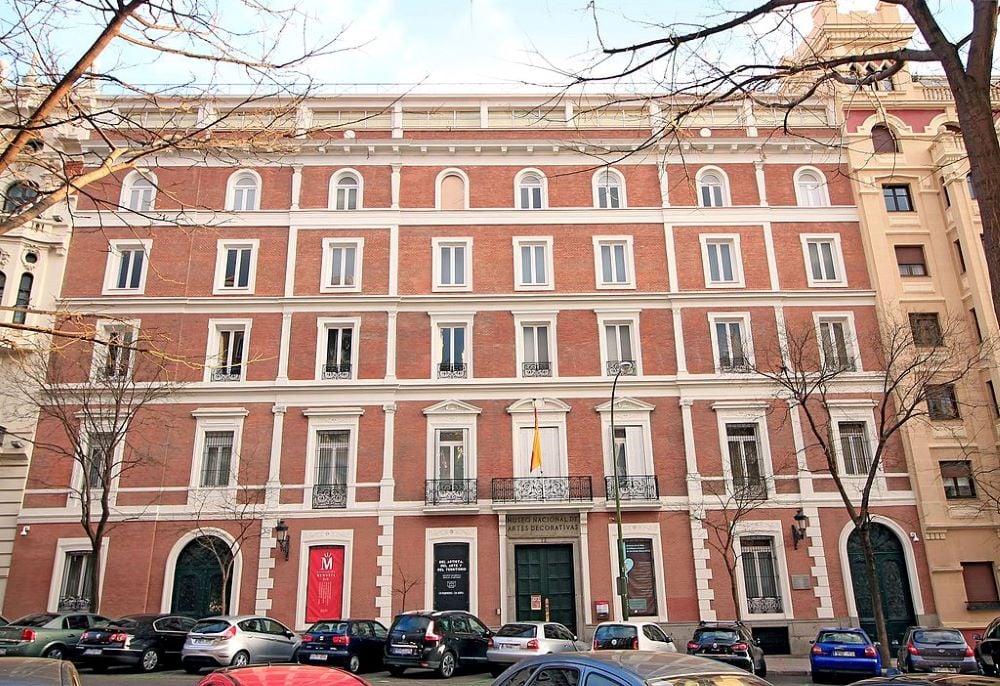
The Palace of the Dukes of Santoña (Palacio de los Duques de Santoña) is a discreet masterpiece in Madrid’s historic center near the lively Plaza de Santa Ana. Built in the mid-18th century, the palace is an exemple of restrained Neoclassicism, later remodeled to reflect the eclectic tastes of 19th-century aristocracy. Its blend of austerity and ornamentation mirrors the transition of Madrid’s nobility from Baroque grandeur to Enlightenment-era refinement. The palace’s façade is dignified, featuring perfectly aligned windows and subtle classical detailing. Step through its imposing entrance, and the grandeur expands with an elegant interior courtyard framed by arched colonnades. Above, wrought iron railings and intricate moldings highlight the building’s aristocratic roots. The ballroom, with gilded mirrors and frescoed ceilings, is a marvel of 19th-century opulence, designed for gatherings that cemented social hierarchies as much as they celebrated art and culture. Originally owned by the Goyeneche family, the palace passed to the Dukes of Santoña in the 1800s, who infused it with their wealth and status. Today, it serves as the headquarters of the Madrid Chamber of Commerce, blending its historical significance with modern functionality. The building remains a testament to how Madrid’s elite artfully wielded architecture to solidify their legacy.
5. Palacio de Godoy
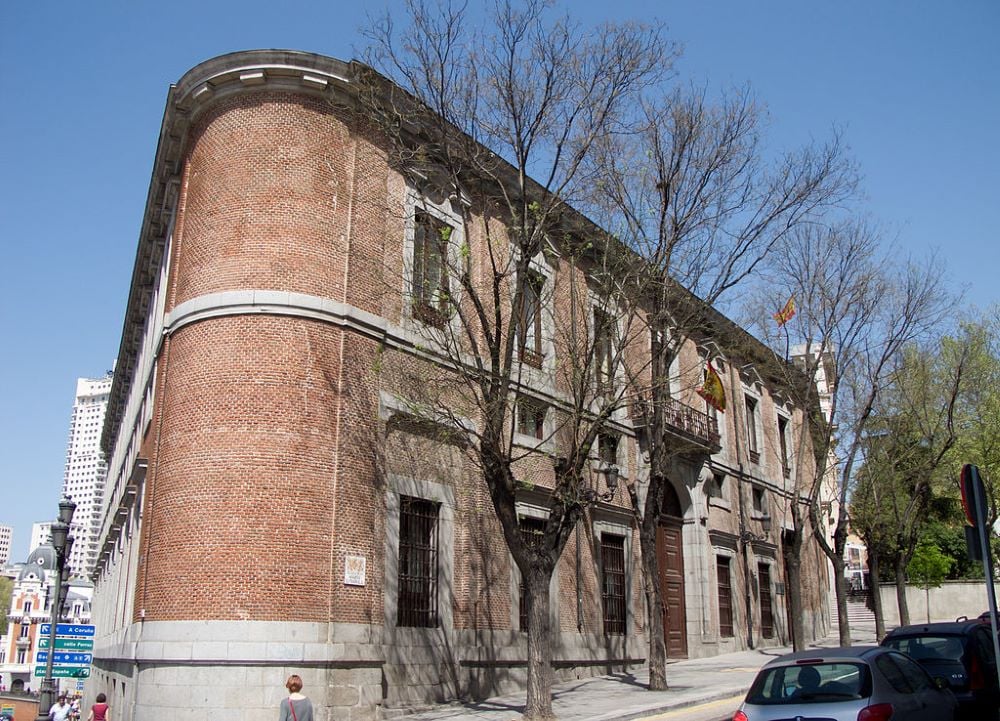
The Palace of Godoy (Palacio de Godoy) stands as a quiet witness to the political and social dramas of 18th-century Spain. Situated near the Royal Palace in Madrid, it was built in the 1770s for Manuel Godoy, the controversial Prime Minister under King Charles IV. While his reputation as a schemer and powerbroker often overshadows his architectural contributions, the palace remains a significant artifact of Madrid’s Bourbon era. Architect Francesco Sabatini, a favorite of the Spanish crown, designed the building with a Neoclassical restraint that contrasted with the flamboyant Rococo styles of the previous generation. The exterior is understated but elegant, with symmetrical lines, framed windows, and a central portico Inside, the palace once housed opulent salons, sweeping staircases, and painted ceilings that reflected Godoy’s aspirations to match the grandeur of European courts. Over the centuries, the building has served many purposes, from a private residence to government offices.
4. Palacio de Gaviria
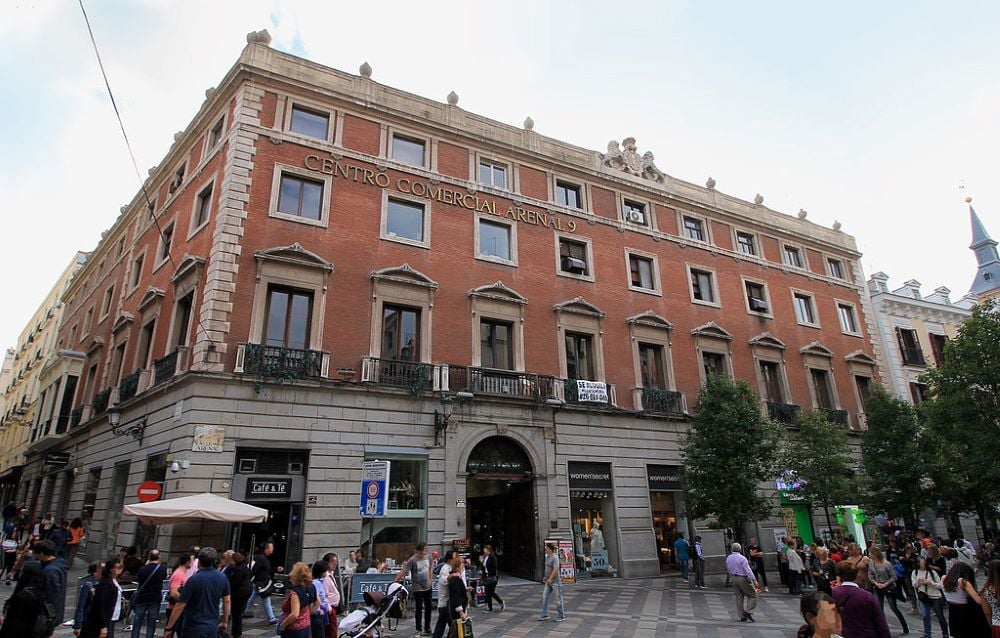
The Palacio de Gaviria, a neoclassical gem in the heart of Madrid, has witnessed centuries of urban transformation. Built in the mid-19th century for the Marquis of Gaviria, the palace was designed by architect Aníbal Álvarez Bouquel, a master of symmetry and restraint. Situated on Calle Arenal, just steps from Puerta del Sol, its location alone speaks to the prestige its original owner sought to convey. Architecturally, the palace embraces the neoclassical aesthetic, with a façade marked by evenly spaced pilasters and tall arched windows. The grand entrance, framed by carved stone detailing, leads to interiors that once showcased gilded ceilings, chandeliers, and elaborate frescoes. The layout includes a series of interconnected salons, perfect for hosting the soirées that made the palace a centerpiece of the city’s social scene. As Madrid modernized, the Palacio de Gaviria evolved, shifting from private residence to a variety of public uses.
3. Palacio Real de El Pardo
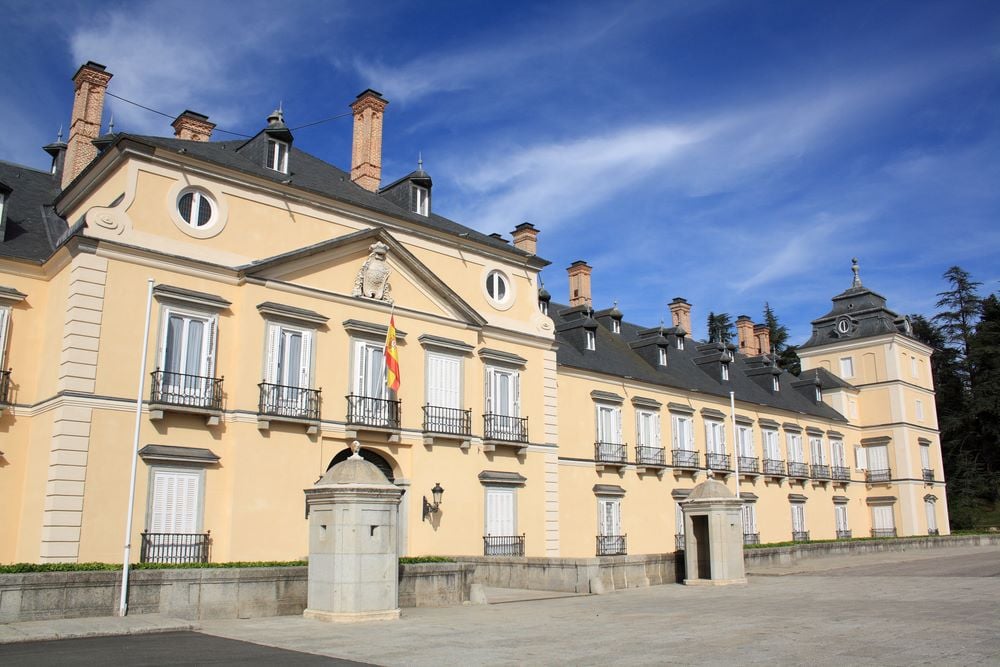
The Royal Palace of El Pardo, located just outside Madrid, was originally a medieval hunting lodge for Spanish royalty. Over the centuries, it grew into a sprawling, fortress-like estate, becoming a favored retreat for kings seeking respite from the city’s political pressures. Designed in the 16th century under the direction of Luis de Vega during the reign of Charles V, the palace blends austere Renaissance design with a hint of military pragmatism, thanks to its thick stone walls and defensive layout. Architecturally, El Pardo is more restrained than its cousin, the Royal Palace of Madrid, but its elegance lies in the details. The interiors feature intricate tapestries produced by the Royal Tapestry Factory, many designed by Francisco de Goya, lending the space a distinctly Spanish grandeur. Culturally, the palace holds layers of history. It served as a home for Franco during his dictatorship, embedding it with 20th-century political significance. Today, the Royal Palace of El Pardo functions as an official state guesthouse for visiting dignitaries.
2. Palacio del Infante Don Luis
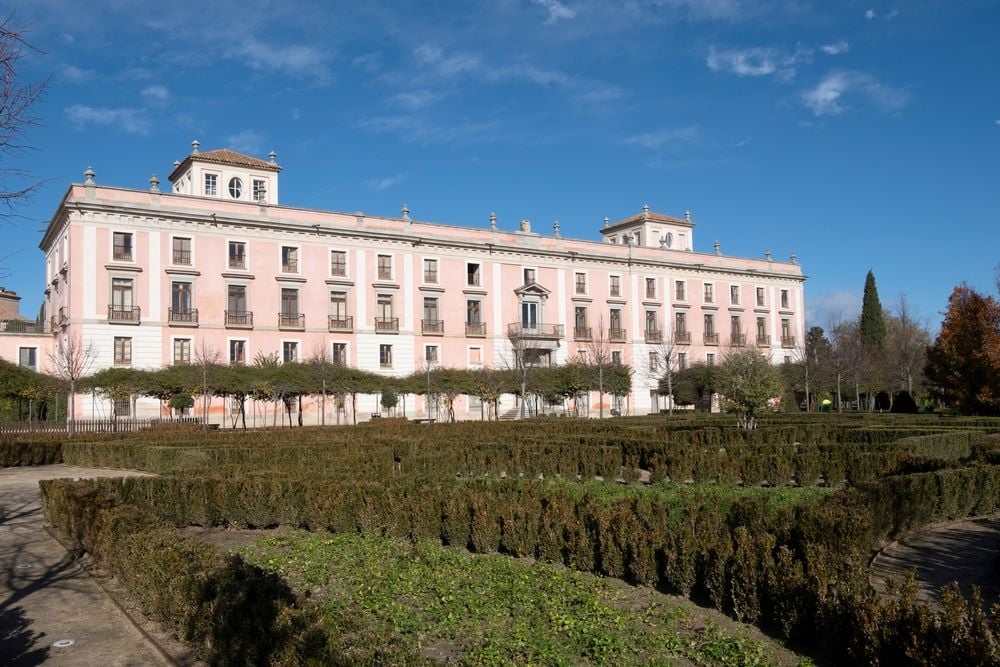
The Palacio del Infante Don Luis, or Palace of Infante Don Luis, sits in Boadilla del Monte, just outside Madrid, as a quintessential example of Enlightenment-era elegance. Commissioned in 1765 by Infante Luis de Borbón, a younger brother of King Charles III, this neoclassical estate was a personal retreat designed by architect Ventura Rodríguez. Its clean symmetry and understated grandeur reveal the shift in Spanish architecture away from baroque excess toward a more restrained aesthetic. The palace’s limestone façade is punctuated by classical columns and crowned by a central pediment. Its rectangular layout frames a vast courtyard, blending practicality with nobility. Inside, the halls once echoed with music, as Infante Luis was an enthusiastic patron of the arts and friend to luminaries like Goya, who painted portraits here. Surrounded by expansive gardens influenced by French formalism, the estate was a cultural hub.
1. Palacio de Oriente (Royal Palace of Madrid)
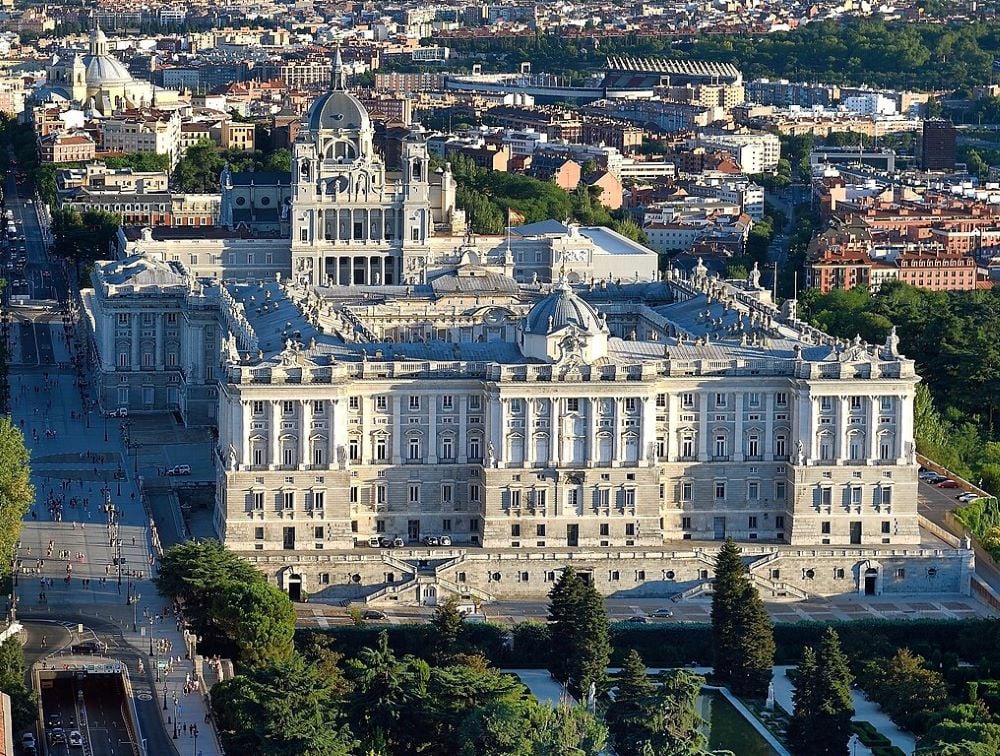
The Royal Palace of Madrid, or Palacio de Oriente, is the grandest symbol of Spanish royalty — a sprawling baroque marvel perched on the site of the Alcázar, a medieval fortress that tragically burned in 1734. Designed by a team of architects, including Filippo Juvarra and Francesco Sabatini, the palace blends Italianate style with Spanish grandeur. Covering 1.45 million square feet with over 3,000 rooms (a fraction of which are in use), it’s one of the largest palaces in Europe. Yet, it remains remarkably cohesive in design, from the stately symmetry of its granite and limestone façade to the ornate interiors brimming with rococo flourishes. Highlights include the Throne Room with its crimson walls and gilded accents, and the grand staircase. Historically, this was not a family home but a stage for power, serving as the monarchy’s official residence. While the current royals live elsewhere, the palace continues to host state events. Its artistic treasures — Velázquez paintings, Stradivarius instruments, and frescoes by Giaquinto — cement its status as a cultural powerhouse.






